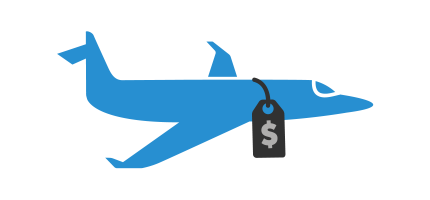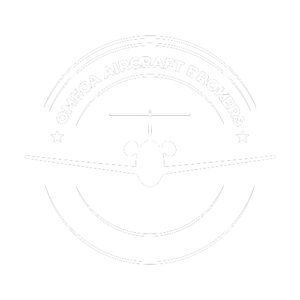Aircraft Remarketing 101 - A Complete Overview

In the dynamic world of aviation, the concept of aircraft remarketing stands as a pivotal strategy for maximizing asset value and ensuring aircraft continue to meet the evolving needs of the market. Aircraft remarketing encompasses more than just the sale of an airplane; it is a comprehensive approach tailored to extend the lifecycle of private aircraft, securing their place in the skies efficiently and effectively. This process is crucial, not only for individual owners but also for companies and airlines seeking to optimize their fleets according to operational demands and financial objectives. Remarketing offers a pathway to navigate the complexities of expenses, market fluctuations, and the continuous quest to match aircraft with potential buyers across multiple locations. With the aviation industry’s rapid pace, the ability to leverage an extensive network and deliver required services promptly becomes indispensable. Thus, an aircraft remarketing overview reveals it as a strategic tool in ensuring that the value of an aircraft is realized to its fullest, benefiting all parties involved in its lifecycle.
In the dynamic world of aviation, the concept of aircraft remarketing plays a pivotal role in maximizing the value and extending the lifecycle of aircraft. This overview aims to shed light on how aircraft sales and leasing are optimized through strategic remarketing efforts. Aircraft remarketing encompasses the process of selling or leasing previously owned aircraft to potential buyers or lessees, ensuring aircraft maintain their value and continue to generate revenue over time. Whether it’s for commercial airlines, private aircraft ownership, or specialized aviation services, remarketing is a crucial element in the aviation industry.
| Key Takeaway | Description |
|---|---|
| Strategic Importance of Aircraft Remarketing | Aircraft remarketing is a vital strategy in the aviation industry, extending the lifecycle of aircraft and maximizing their value. It encompasses selling or leasing previously owned aircraft to meet market demands and operational needs. |
| Benefits for Aircraft Owners | Remarketing reduces maintenance costs and helps retain market value. It allows owners to leverage market trends and sell or lease aircraft in multiple locations, ensuring assets remain lucrative. |
| Role of Aircraft Leasing in Remarketing | Leasing is a flexible solution in the remarketing process, maintaining aircraft value by ensuring continuous use. It includes required services such as maintenance and crew training, depending on lease terms. |
| Steps in the Aircraft Remarketing Process | The process involves assessing the aircraft, creating marketing literature, negotiating terms, and finalizing the purchase agreement. It is influenced by market demand, with high demand leading to quicker sales. |
| Targeting Potential Buyers and Marketing Strategies | Identifying potential buyers requires understanding market trends and demand for different aircraft types. Marketing strategies should highlight unique aspects of the aircraft, and owners should work with brokers who have an extensive network to reach customers in multiple locations. |
| Concluding the Remarketing Journey | Successful remarketing requires staying informed about market conditions, maintaining good relationships with brokers, and navigating the process with strategic marketing and clear communication. The transfer of aircraft to new owners or fleets signifies the effective conclusion of the remarketing journey. |
The Importance of Aircraft Remarketing

Aircraft remarketing is not just about selling or leasing an airplane; it’s about understanding the market demands, aircraft type specifics, and the intricate process involved in transitioning an asset from one owner to another. The industry has seen a notable shift towards utilizing extensive networks and marketing literature to reach buyers across multiple locations, highlighting the importance of an extensive network. This strategic approach not only helps in reducing operating costs but also in securing the best deal for both the seller and the buyer, ensuring a smooth sale process.
Remarketing aids in highlighting the aircraft’s features, maintenance history, and required services, making it more appealing to potential buyers. By engaging in effective remarketing strategies, owners can significantly reduce the time an aircraft spends on the ground, awaiting sale, and can swiftly return it to operation, thus maintaining its value and utility in the market.
In this competitive industry, aircraft remarketing emerges as a key player in ensuring aircraft assets are utilized to their fullest value, catering to the evolving needs of aircraft owners and operators.
Benefits for Aircraft Owners

The strategic maneuver of aircraft remarketing presents numerous benefits for aircraft owners, notably in the realms of maintenance reduction and market value retention. By engaging in the remarketing process, owners find themselves at a vantage point where expenses can be dramatically lowered, particularly through services that optimize aircraft utility and operational efficiency.
In this intricate market, where demand for specific aircraft types and configurations can fluctuate, the ability to sell or lease aircraft to customers in multiple locations through an extensive network of brokers and deal channels is invaluable. It allows owners to capitalize on market trends, ensuring their assets remain lucrative and desirable.
Moreover, the sales process is enriched by comprehensive marketing strategies that include detailed marketing literature and technical data sheets, showcasing the aircraft’s capabilities and maintenance records. This transparency not only builds trust among potential buyers but also streamlines the purchase process, making it easier for buyers to decide. Additionally, marketing efforts that highlight beneficial ownership experiences, such as safety records, fuel efficiency, and operational cost savings, further bolster the aircraft’s appeal in the market.
Steps in the Aircraft Remarketing Process

The journey of aircraft sales and purchasing is governed by a meticulous process that ensures aircraft are matched with the right owners and fleets. This process often begins with a comprehensive assessment of the aircraft, evaluating its maintenance history, engines, and overall condition. Following this, the creation of marketing literature becomes crucial, detailing the aircraft type, capabilities, and unique selling points to attract customers across multiple locations.
Negotiations play a critical role in this stage, where owners and potential buyers discuss terms, costs, and ownership costs. The insurance policy may also be reviewed to ensure it meets the new ownership requirements. Throughout these discussions, other brokers may become involved to secure the best deal, facilitating the transfer of ownership.
The final step involves the purchase agreement and planning the transfer date. This stage is crucial as it ensures all parties are clear on when the aircraft will fly under new ownership, integrating into new fleets or being prepared for charters. The demand in the market significantly influences the speed and efficiency of this process, with high demand leading to quicker sales.
Concluding the Remarketing Journey

In concluding the remarketing journey, it’s important for owners to understand the dynamic nature of the aircraft sales and leasing market. Staying informed about market conditions, demand for specific aircraft types, and maintaining good relationships with aircraft brokers and other parties involved in the sales process can make a significant difference in achieving successful outcomes.
The purchase and transfer of aircraft to new owners or into new fleets is a testament to the effective remarketing process, showcasing the aircraft’s continued value and utility in commercial and private sectors. Owners who navigate the remarketing process with strategic marketing, clear communication, and the right support from brokers and services are well-positioned to secure the best deals, ensuring their aircraft fly off to the next chapter in their operational life with ease.
Reflecting on this journey, aircraft remarketing emerges not just as a transaction but as a strategic move to maximize the aircraft’s lifecycle and value, benefiting owners, buyers, and the aviation industry at large. Whether it’s for upgrading fleets, diversifying charters, or simply moving on to newer models, the remarketing process is integral to the vibrant ecosystem of aircraft ownership and operation.
Aircraft Remarketing 101 – A Complete Overview
Aircraft Remarketing 101 – A Complete Overview In the dynamic...
Read More